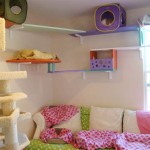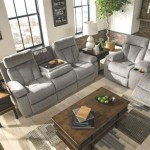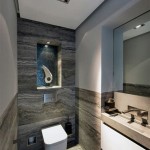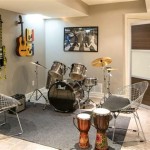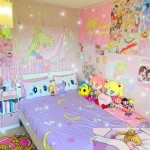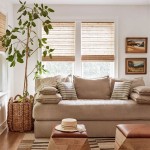Popular Living Room Decor Trends in 2024
The year 2024 brings a dynamic shift in living room decor, influenced by evolving lifestyles, technological advancements, and a heightened awareness of sustainability. Interior designers and homeowners are increasingly seeking spaces that offer both aesthetic appeal and functional comfort. Several key trends are emerging, shaping the way living rooms are designed and experienced.
Biophilic Design: Connecting with Nature
Biophilic design, which focuses on integrating natural elements into the built environment, continues to gain momentum. The core principle is to enhance connectivity between occupants and the natural world, thereby promoting well-being and reducing stress. This approach is particularly relevant in urban settings where access to nature may be limited.
One prevalent aspect of biophilic design in living rooms is the incorporation of indoor plants. From small succulents adorning shelves to large, statement-making trees strategically placed in corners, greenery adds vibrancy and a sense of freshness. These plants also contribute to air purification, improving the overall indoor environment.
Natural materials are also central to biophilic design. Wood, stone, bamboo, and rattan are frequently used in furniture, flooring, and wall coverings. These materials bring warmth and texture to the space, creating a more inviting and organic atmosphere. The use of natural fibers such as wool, cotton, and linen in upholstery and rugs further enhances the connection to nature.
Color palettes inspired by nature are another key element. Earthy tones, such as greens, browns, blues, and grays, dominate the color schemes. These colors evoke feelings of tranquility and calmness, contributing to a more relaxed and harmonious living space. Natural light is maximized through the use of large windows and skylights, further blurring the lines between the indoor and outdoor environments.
Features like water features, such as small indoor fountains or aquariums, can also be incorporated to introduce the soothing sounds and visual appeal of water. These elements can transform a living room into a serene oasis, promoting relaxation and contemplation.
Multifunctional Spaces: Adapting to Modern Lifestyles
Modern lifestyles demand greater flexibility and adaptability in living spaces. The traditional concept of a living room solely dedicated to relaxation and entertainment is evolving. In 2024, living rooms are increasingly designed as multifunctional spaces that can accommodate a variety of activities, from working from home to hosting gatherings.
The integration of home office elements is a significant trend. With the rise of remote work, many individuals require a dedicated workspace within their living room. This can be achieved with the use of stylish desks, ergonomic chairs, and clever storage solutions that blend seamlessly with the overall decor. Foldable desks and modular furniture are particularly useful for maximizing space and creating a flexible work environment.
Storage solutions are crucial for maintaining order and organization in a multifunctional living room. Built-in shelving units, cabinets, and hidden storage compartments are effective ways to conceal clutter and keep the space looking tidy. Multi-purpose furniture, such as coffee tables with lift-top storage or ottomans with interior compartments, provides additional storage options without compromising style.
Zoning is another important aspect of creating a multifunctional living room. This involves dividing the space into distinct areas for different activities, such as a relaxation zone with comfortable seating and a reading nook, a work zone with a desk and chair, and an entertainment zone with a television and sound system. Room dividers, screens, and strategically placed furniture can be used to visually separate these zones without creating a sense of confinement.
Lighting plays a critical role in defining the different zones within a multifunctional living room. Task lighting, such as desk lamps, is essential for the work area, while ambient lighting, such as floor lamps and recessed lighting, creates a warm and inviting atmosphere in the relaxation zone. Adjustable lighting systems allow for customization and adaptation to different activities and moods.
Bold Colors and Textures: Expressing Individuality
While neutral palettes remain popular for creating a calming backdrop, there is a growing trend towards incorporating bolder colors and textures to express individuality and add personality to living rooms. This involves experimenting with vibrant hues, unexpected patterns, and tactile materials to create a visually stimulating and engaging space.
Jewel tones, such as emerald green, sapphire blue, ruby red, and amethyst purple, are gaining popularity. These rich and luxurious colors add depth and sophistication to the decor. They can be used as accent colors in upholstery, rugs, and accessories, or as the dominant color in a feature wall or statement piece of furniture.
Textural contrasts are also key to creating visual interest. Combining smooth surfaces with rough textures, such as velvet upholstery with woven rugs or polished metal with raw wood, adds depth and complexity to the design. Layering different textures, such as throws, cushions, and wall hangings, creates a tactile and inviting atmosphere.
Geometric patterns are making a comeback, adding a touch of modernity and dynamism to living rooms. These patterns can be incorporated in wallpaper, rugs, cushions, and artwork. Bold geometric patterns can be used to create a focal point or add a playful element to the decor. Abstract art, with its expressive use of color and form, is also becoming increasingly popular.
Metallic accents, such as gold, silver, and copper, add a touch of glamour and sophistication to living rooms. These accents can be used in lighting fixtures, furniture hardware, and decorative accessories. Metallic finishes can be combined with other materials, such as wood, stone, and glass, to create a luxurious and contemporary look.
Wallpaper is experiencing a resurgence, with a wide range of designs available, from bold geometric patterns to intricate floral motifs. Wallpaper can be used to create a statement wall or to add texture and depth to the entire room. Textured wallpapers, such as grasscloth or embossed designs, are particularly effective at adding visual interest.
The integration of artisanal and handcrafted items is another way to express individuality. This includes incorporating unique pieces of furniture, handmade textiles, and one-of-a-kind artwork. These items add character and authenticity to the living room, reflecting the homeowner's personal style and values.
Sustainable Choices: Eco-Conscious Living
Sustainability is no longer a niche trend but a mainstream concern, influencing every aspect of interior design. In 2024, homeowners are actively seeking eco-friendly options for their living room decor, prioritizing materials and practices that minimize environmental impact and promote ethical sourcing.
Sustainable materials are at the forefront of this trend. Recycled and reclaimed materials are increasingly used in furniture, flooring, and wall coverings. Reclaimed wood, salvaged from old buildings or furniture, adds character and history to the space while reducing the demand for new timber. Recycled glass and plastic are also used to create unique and eco-friendly decorative accessories.
Environmentally friendly paints and finishes are another important consideration. Low-VOC (volatile organic compound) paints and natural finishes, such as beeswax and linseed oil, minimize the release of harmful chemicals into the air, creating a healthier indoor environment. These products are also often more durable and long-lasting, reducing the need for frequent replacements.
Sustainable textiles, such as organic cotton, linen, hemp, and bamboo, are used in upholstery, rugs, and curtains. These materials are grown without the use of harmful pesticides and fertilizers, reducing their environmental impact. Recycled polyester, made from recycled plastic bottles, is also a sustainable alternative for synthetic fabrics.
Energy-efficient lighting is essential for reducing the carbon footprint of a living room. LED (light-emitting diode) bulbs consume significantly less energy than traditional incandescent bulbs and have a much longer lifespan. Smart lighting systems, which allow for dimming and scheduling, further optimize energy consumption.
Vintage and antique furniture is a sustainable alternative to buying new pieces. By repurposing existing furniture, homeowners can reduce the demand for new resources and minimize waste. Vintage furniture often has a unique character and craftsmanship that is difficult to replicate with modern mass-produced items.
Supporting local artisans and businesses is another way to promote sustainability. By purchasing locally made furniture and accessories, homeowners can reduce the environmental impact of transportation and support their local economy. This also ensures that the products are made ethically and sustainably.
The principles of minimalism and mindful consumption also contribute to sustainable living room decor. By decluttering and focusing on essential items, homeowners can reduce waste and create a more peaceful and harmonious living space. Choosing quality over quantity and investing in durable, long-lasting pieces is a key aspect of this approach.
Technological Integration: Smart and Connected Spaces
Technology is playing an increasingly prominent role in living room decor, transforming these spaces into smart and connected environments. From automated lighting and temperature control to integrated entertainment systems and voice-activated assistants, technology is enhancing convenience, comfort, and efficiency.
Smart lighting systems allow homeowners to control the lighting in their living room remotely, using their smartphones or voice commands. These systems can be programmed to adjust the lighting according to the time of day, mood, or activity. Smart bulbs can also change color temperature, creating a warmer or cooler atmosphere depending on the preference.
Smart thermostats allow for precise temperature control, optimizing energy consumption and ensuring a comfortable living environment. These thermostats can learn the homeowner's preferences and automatically adjust the temperature accordingly. They can also be controlled remotely, allowing homeowners to pre-heat or pre-cool their living room before they arrive home.
Integrated entertainment systems combine audio, visual, and gaming components into a seamless and user-friendly experience. These systems often include a smart television, surround sound speakers, and a gaming console, all controlled by a single remote or voice command. Streaming services and online gaming platforms are also seamlessly integrated into these systems.
Voice-activated assistants, such as Amazon Alexa and Google Assistant, are becoming increasingly popular in living rooms. These assistants can control various smart devices, play music, answer questions, and provide information. They can also be used to control the lighting, temperature, and entertainment system in the living room.
Smart furniture, such as sofas with built-in charging ports and coffee tables with integrated wireless charging pads, is becoming increasingly common. These features add convenience and functionality to the living room, allowing homeowners to stay connected and powered up without the need for unsightly cords and cables.
Home automation systems integrate all the smart devices in the living room into a single, unified platform. These systems allow homeowners to control and monitor their living room remotely, using their smartphones or tablets. They can also be programmed to automate various tasks, such as turning on the lights when someone enters the room or adjusting the temperature based on the weather forecast.
The integration of technology into living room decor is not just about adding convenience and functionality; it is also about creating a more personalized and immersive experience. By customizing the lighting, temperature, and entertainment system to their individual preferences, homeowners can create a living room that is perfectly tailored to their needs and desires.

Living Room Trends 2025 What S New In Home Comfort And Style Decorilla Interior Design

Living Room Trends 2025 What S New In Home Comfort And Style Decorilla Interior Design

Living Room Trends 2025 What S New In Home Comfort And Style Decorilla Interior Design

The Top 5 Living Room Trends Of 2025 According To Design Experts

Living Room Trends 2025 What S New In Home Comfort And Style Decorilla Interior Design

2025 Home Decor Trends And Interior Design Ideas You Will Love Jane At

The 6 Biggest Living Room Trends For 2025 According To Experts

Living Room Trends 2025 What S New In Home Comfort And Style Decorilla Interior Design

The Top 5 Living Room Trends Of 2025 According To Design Experts

Furniture Trends 2025 15 Must Have Looks For Your Home Decorilla Interior Design
